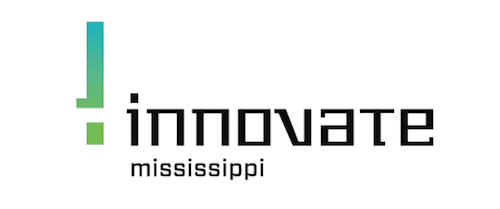 In last week’s article I mentioned that Innovate Mississippi took a delegation of five companies to the International Consumer Electronics Show. I think all five companies made some good connections and I’ll talk more about those companies, their technologies and what they are up to in future articles. While it’s fresh on my mind, though, I want to highlight some of the most interesting things I saw and some technologies that impressed me the most.
In last week’s article I mentioned that Innovate Mississippi took a delegation of five companies to the International Consumer Electronics Show. I think all five companies made some good connections and I’ll talk more about those companies, their technologies and what they are up to in future articles. While it’s fresh on my mind, though, I want to highlight some of the most interesting things I saw and some technologies that impressed me the most.
First, the show ended up being just as big and just as interesting as promised. Just over 170,000 people — 50,000 from outside the United States — attended the show and filled the multiple venues used for both exhibits and conferences. Among the crowds and activity there were certainly some impressive technologies and while opinions will no doubt vary as to which ones are really the biggest breakthroughs, these are some of the ones that seemed to be getting the most buzz:
Virtual reality headsets were everywhere and ranged from Google’s Cardboard — a cardboard box to hold your cellphone in front of your face to the highest-end systems. The price point of very high quality 360-degree cameras has dropped so much that for under $300 anyone can film in 4K 360 video and with VR headsets to display the footage. There seemed to be people everywhere at the show with VR headsets on and jaws dropped.
No technology showed up in every corner of CES 2016 as much as drones — and you couldn’t turn a corner without seeing drones of all shapes and sizes. The drone getting the most buzz was the EHang 184 — “The world’s first passenger drone” — which can carry a single passenger up to 20 miles in 20 minutes to a pre-programmed location. That’s awesome, but as many people seem to be as scared as excited about that prospect. I found the “Pocket Drone” introduced by Odyssey to be just as exciting on a different scale. It is the size of a checkbook or large cellphone, fits in a pocket completely flat, but can take off and record 720p video.
The category of “wearables” originally meant watches, fitness monitors and things like Google Glass but now means everything from smart shirts and suits to belts that tell you when you are gaining weight. (The belt gets tighter when you gain weight — imagine that.) Not all of the tracking seemed useful, honestly, so the big question is how much better are these devices than what is already on the market.
Despite all the bad publicity about hoverboards catching on fire and campuses and cities banning their use, hoverboards and devices designed like hoverboards were everywhere. If you’re not familiar with the technology, hoverboards are really just self-balancing scooters that appear to hover, and there were similar designs used in skateboards, roller skates and various configurations of balancing platforms.
While there have been television innovations from previous years like the first introduction of true high definition, many of the subsequent innovations like 3-D, 4K, and curved televisions haven’t proven to be that dramatic. High Dynamic Range (HDR) is a really big deal, though, since it’s completely obvious to the naked eye and essentially just makes darks darker and colors brighter with greater contrast. It can also be deployed in 4K or 3-D, but it’s definitely going to be noticeable to viewers.
A few Individual products that impressed:
- Real-looking Holograms from British company Kino-mo. These holograms looked like something from science fiction and will be available commercially this year.
- Smart light bulbs by BeON Home. These bulbs go in regular sockets but have batteries to turn on in power outages and can be controlled to turn on when fire alarms or doorbells sound. They can even mimic your every-day lighting patterns when you are away from home and are controlled by an app when you don’t want to use your light switch.
- A Smart Bicycle helmet called the BH-60 by Livall that has built in Bluetooth headphones, LED lighting, including turn signals and even emergency notification in case of crash.
Finally, an announcement by IBM and Japanese SoftBank has perhaps the biggest chance to change our lives and our future. SoftBank had already developed a cute, autonomous robot called Pepper that it had been using as a greeter at some banks and coffee shops in Japan. Now each Pepper is connected to IBM’s “Watson” — the supercomputer that has beaten the two greatest (human) “Jeopardy” champions. That means these cute autonomous robots can now process 800 million pages of information a second and apply that knowledge in a very humanlike — or better than humanlike — way. I think I reacted a lot like the people around me at that announcement We all talked about visions of the move “iRobot” in our future.
In short, the International CES was a great place to see cutting-edge technologies that will no doubt become mainstream soon, but luckily we — as consumers — will get to decide which of the technologies we really need and which will just prove to be footnotes on the trail of interesting, but ultimately not useful technologies.
Tony Jeff is the president and CEO of Innovate Mississippi. He can be reached at tjeff@innovate.ms.
